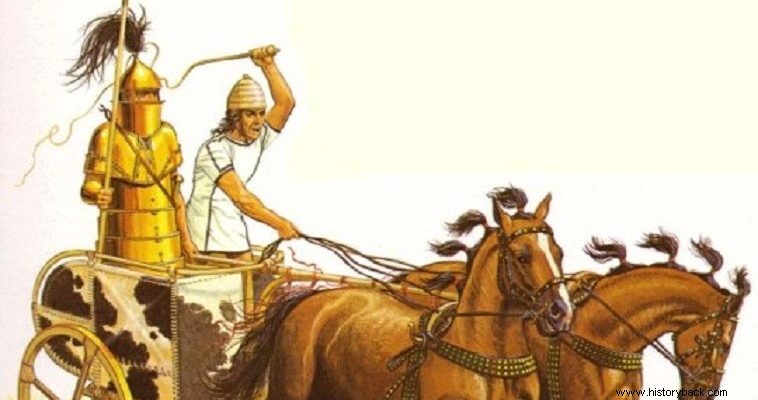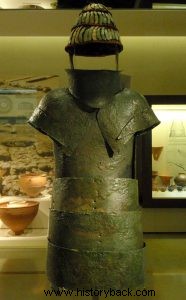
The arsenal of the Mycenaean warrior was completed by the heavy breastplate. The elite warriors initially carried very heavy breastplates, of the Dendra type – from the location where it was discovered in a Mycenaean tomb, in Dendra of the Argolis. Tree-type armor provided excellent protection to the warrior who wore it, making him largely invulnerable. It consisted of two halves on which several other parts were attached.
Separate metal parts covered the shoulders of the warrior, reaching up to the height of the chest, thus enhancing the strength of the breastplates. At the bottom of the breastplates, thick metal bands were fitted, which protected the warrior from the waist up to the height of the knees. And the shins were protected by copper or leather shin guards, which were tied to the leg with leather straps.
The area from the top of the sternum to almost the chin of the warrior was protected by a special metal collar, wide enough to allow the warrior to comfortably turn his head. Literally armored, the Mycenaean Epetis, an elite warrior, was in himself a powerful war machine, analogous to the medieval knight.
Dendra-type armor was a purely Greek invention. In no other country was this type of armor developed at that time. The best that the Orientals had managed to create were breastplates made of metal scales or plates, which they adapted to thick cloths. The Dendra-type armor provided sufficient protection against thrust and night blows, but it reduced the agility of the warrior who wore it and its heavy weight made it tiring.
Especially in the later period, when the battle became more "fluid", this model of armor was no longer useful. That's why it was replaced. Essentially, of course, it was not a matter of replacing but of alleviating it. The two half-chests - front and back - remained in use, essentially constituting what we now call a chest.
But the epaulettes, the collar and the ring-shaped vestments, which covered the lower part of the warrior's body, were abandoned. The Mycenaean warrior of later times was much more similar to the hoplite of classical times than to the Minoan or early Mycenaean warrior from whom he descended.

